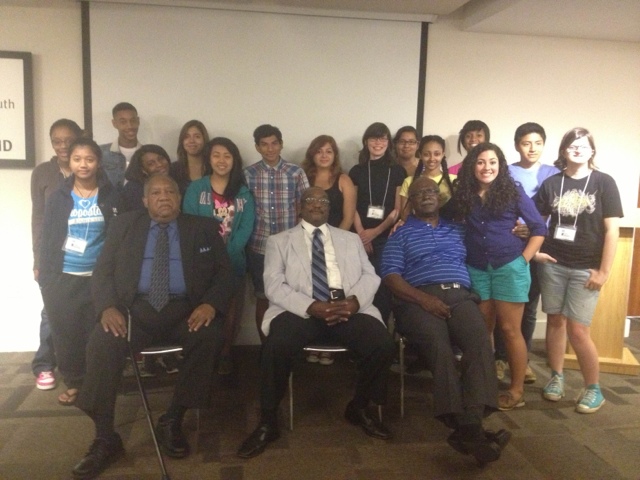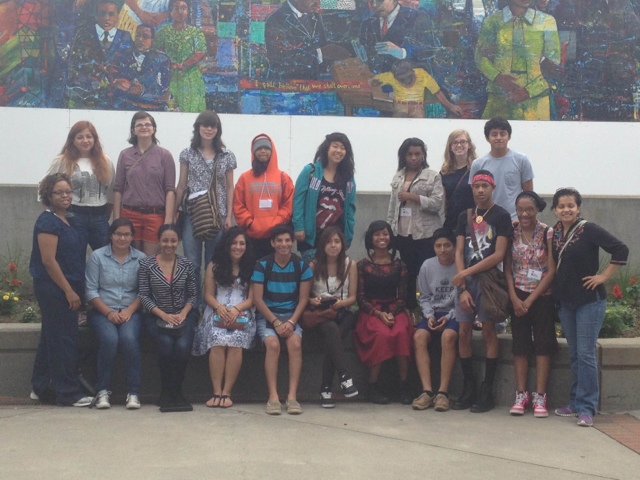Using history to build community, we explore the New South from the end of the Civil War to today through powerful exhibits, programs and dialogue. Our blog is an extension of the programs and exhibits we provide to the Charlotte community and beyond.
Wednesday, December 11, 2013
Ask an Artist!: A View From The Other Side
Next up: Antoine Williams, Local Artist and Designer
What part of history inspired your artwork?
When it comes to history, I'm interested in how human beings have interacted with one another. Therefore, points in time when one group exerts power over another and reaction that produces. More specifically, slavery up to Jim Crow and the civil rights movement, American military history, also the relationship between the ruling class and average people.
What do you hope guest experience when viewing your artwork?
Evoking any type of emotion is of particular interest to me. The view completes the piece. So, I hope they bring their own experiences to the work, coupled with what I've created maybe they can come to their own conclusions.
What roles does the community play in your art?
My work is a look at how socioeconomic factors can affect ones cultural identity, therefore, the art I'm creating is heavily influenced by the communities I grew up with and the ones I currently exist in now.
What other imagery/ stories do you explore within your work?
Lately, I've been interested in merging representations of contemporary people from various social strata with early 18th century animal illustrations, as a look into how we create monsters out of those we deem different than ourselves.
Learn more about Antoine on his Tumblr and website.
Come view Antoine and other's artwork in the View from the Other Side exhibit at the Levine Museum, on display through February 2, 2014.
Have you seen Antoine's artwork? Tell us what you think below.
Be sure to follow us on Twitter, tag us on Instagram and like us on Facebook.
Thursday, December 5, 2013
Ask an Artist!: View From The Other Side
Next up: Rosalia Weiner, Local Artist and Founder of Project Art Aid

What part of history inspired your artwork?
My work is heavily influenced by current events. In my view, what is happening with immigrant rights, immigration reform, and the rise of Hispanic culture in America is historic.
What do you hope guest experience when viewing your artwork?
I hope that guest experience the vibrant colors of my Mexican culture, and I also hope that my work broadens their perception of immigration issues.
What role does the community play in your art?
The community plays a very important role in my work. My work is often based on their stories and experiences, and art is my tool for giving voice to the issues that are affecting us.
What other imagery/stories do you explore within your work?
I have also told love stories with my art. In a recent commission, I narrated the story of a couple and blended family, with images detailing the places where they were from, where they met, and distinct aspects of their personalities and style.
Come view Rosalia and other's artwork in the View from the Other Side exhibit at the Levine Museum, on display through February 2, 2014.
Tell us what you think of Rosalia's work in the comments below and share with your friends!
Be sure to follow us on Twitter, tag us on Instagram and like us on Facebook.
Monday, November 25, 2013
Ask an Artist!: View from the Other Side
View from the Other Side features local artists' responses to the exhibit, Network of Mutuality: 50 Years Post-Birmingham. The artists submitted pieces related to the topic of Civil Rights struggles in our region. Both exhibits are presented as part of the Museum's two-year series, Destination Freedom: Civil Rights Struggles Then and Now. To bring deeper insights into the exhibit, we asked the artists to talk about their work and share what in history inspired them and what they hope guests gain from their art.
Next up: Mikale Kwiatkowski, Local Artist and UNC Charlotte School of Architecture Teaching Fellow
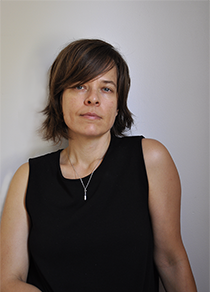 What part of history inspired your artwork?
What part of history inspired your artwork?Feminist theory from the 1970's to the present was the starting point for my research, and queer theory from the early 1990's to the present became an even more influential driver during my actual making process. In addition, artists like Rebecca Horn and Rachael Whiteread continue to be influential.
What do you hope guests experience when viewing your artwork?
Honestly, my greatest hope is that my piece will prompt new thought in viewers -- that people who have never before considered how they publicly perform identities like gender and sexuality might consider culturally constructed scripts that they have adopted as their own. I have no issue with conscious choices people make around these identities but I firmly believe many people unconsciously follow socially prescribed scripts instead of making choices from the stronger vantage point of awareness.
What role does the community play in your art?
Community, well it plays a big role I guess. Cultural ideology is embedded within communities. There is a lot to like about Charlotte, but the conservative nature of the city is its own obstacle for progressive growth. The effort that Levine Museum of the New South makes in bringing awareness to normalizing ideology is striking and extremely valuable in a community like Charlotte's.
 What other imagery/ stories do you explore within your work?
What other imagery/ stories do you explore within your work?For the time being, I am focused on creating experiential assemblages that attempt to disrupt or destabilize processes of normalization that exist in Western culture.
Come view Mikale and others' artwork in the View from the Other Side exhibit at Levine Museum, on display through February 2, 2014.
Be sure to follow us on Twitter, tag us on Instagram and like us on Facebook.
Friday, September 13, 2013
Destination Freedom Kick Off: Ask an Activist!
Thursday, September 12, 2013
Destination Freedom Kick Off: Ask an Activist!
Next: Ms. Dorothy Counts-Scoggins, One of 4 girls to participate in the 1957 desegregation of Harding High School, an all-white school in Charlotte, NC.
How do you remember Sept. 15, 1963 and what did it mean to the Movement?
I was a junior in college and had just returned to school. Students on the campus that participated in the March On Washington were talking about their experience in Washington on August 28, 1963. We were all excited about the changes that would happen in this country, “hope” was the key word. Racial equality was now beginning to happen. After my experience with school desegregation in 1957 was not a success, I hoped that things were going to change for young children in this country; to receive what they deserved, a quality education. Then on September 15, 1963, the 16th Street Baptist Church was bombed in Birmingham, Alabama, as an act of racially motivated terrorism. I asked myself “how could someone have so much hatred that [one] would kill 4 innocent children?” This was the turning point for the Civil Rights Movement and passing of the Civil Rights Act in 1964. Hope was alive again!
How do you recall your activism and any highlights of it?
My activism started as a young 15 year-old girl entering an all-white school in Charlotte, North Carolina, in hopes of receiving a quality education, because racial desegregation was unjust and morally wrong. The law was passed in 1954 and it was time to test the law and I was one of the 4 chosen to test the law. Charlotte was not prepared, nor willing to make this change in the system. My experience, was not a good one for me, it changed my life. I would go on to fight to ensure that other children did not endure what I experienced. My life has been working with young children, teaching tolerance and injustice so that when they grow up they will learn the importance of acceptance. I was not a marcher, but I felt that through my teaching and mentoring of young children they could learn the importance of “acceptance” and carry on these beliefs and change the world.
How does the Civil Rights Movement relate to today?
The passion is gone; people have become accepting of the norm and allowed the fight that we made to be forgotten. Yes, we have an African American President in this country, I did not think I would live to see, but the hatred and racial inequality has resurfaced as it was 50+ years ago.
What issues are we still facing?
Resegregation of our schools, voter suppression, rights for women [are all] being denied, so many of our laws are being changed to set us back, especially in North Carolina’s 200 years. My hope is that after the March on Washington in 2013, which had a very diverse population of people, we will pick up and fight for what is racially and morally right in this country again.
What are you looking forward to during the Destination Freedom Kick Off on September 15?
I am looking forward to the conversations and reflections of others in the group of their views of the Civil Rights Movement, and their thoughts of now and where we need to go to move forward. Also, looking forward to hearing Diane Nash.
Wednesday, September 11, 2013
Destination Freedom Kick Off: Ask an Activist!
 How does Sept. 15, 1963 relate to the causes you are most
passionate about? What takeaways have you gained from the Civil Rights
Movement?
How does Sept. 15, 1963 relate to the causes you are most
passionate about? What takeaways have you gained from the Civil Rights
Movement?Sunday, September 8, 2013
Destination Freedom...Four Little Girls
 |
| Plaque commemorating the four girls killed in the 16th Street Baptist Church Bombing |
 |
| The aftermath of the dynamite explosion at 16th Street Baptist Church in Birmingham, Alabama |
You can also find us at Facebook.com/Levine Museum to RSVP to the screening and learn more about the Destination Freedom series.
Sunday, September 1, 2013
Destination Freedom...The Artists Capturing the Civil Rights Movement
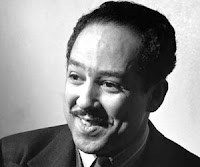 |
| Hughes |
His poem “Birmingham Sunday” (you can read here), looked at the events of the 16th Street Baptist church bombing, while the poem “Go Slow” responds to those who criticized the movement as being too confrontational—the same criticism that inspired Dr. Martin Luther King to write his “Letter from a Birmingham Jail.” In other works like “Freedom [3],” “Bombings in Dixie,” and “Death in Yorkville” about the 1964 death of James Powell, Hughes explored the many questions and contradictions of American democracy that the movement exposed.
 |
| Lukova's "I Have a Dream" |
 |
| Public art at Kelly Ingram Park in Birmingham, Alabama |
What are some of your favorite artistic pieces that deal with the Civil Rights Movement?
If you were an artist, how would you choose to represent the civil rights events of then or now in art?
Saturday, August 24, 2013
Destination Freedom...Pivotal Moments in 1963
There are many reasons why:
On April 12, 1963, Dr. Martin Luther King Jr., is put in a Birmingham city jail. His arrest and the critique from fellow clergymen urging protesters to take change "slow," prompted Dr. King to write the now widely known, "A Letter from a Birmingham City Jail." This letter, in short, advocated for Dr. King's philosophy of nonviolent direct action. In the opening pages he writes:
 “I
am cognizant of the interrelatedness of all communities and states. I cannot
sit idly by in Atlanta and not be concerned about what happens in Birmingham.
Injustice anywhere is a threat to justice everywhere. We are caught in an
inescapable network of mutuality, tied in a single garment of destiny. Whatever
affects one directly, affects all indirectly.”
“I
am cognizant of the interrelatedness of all communities and states. I cannot
sit idly by in Atlanta and not be concerned about what happens in Birmingham.
Injustice anywhere is a threat to justice everywhere. We are caught in an
inescapable network of mutuality, tied in a single garment of destiny. Whatever
affects one directly, affects all indirectly.”Dr. King’s statement about the inter-relatedness of all people resonated in the reactions to images from Birmingham.

As we look back at the events of 1963, they leave room to consider how our issues “then” coincide with issues “now.”
Thursday, August 15, 2013
Destination Freedom: Civil Rights Struggles Then and Now
 |
| Dr. King, March on Washington, 1963 |
To commemorate that event and the various other civil rights anniversaries from Alabama to Mississippi to North Carolina, Levine Museum of the New South will begin a series of exhibitions and programs known as Destination Freedom that will highlight the aims of the Civil Rights movement then, and the issues we face today.
Destination Freedom will create a cohesive history of the movement for civil rights and the parallels to today. One exhibit in the series, Network of Mutuality: 50 Years Post-Birmingham will be the first that will bring to life—through art—what Birmingham in 1963 meant for the nation. This exhibit will coincide with our film series that will document many different facets of the movement.
With movies such as "4 Little Girls," (screenings are scheduled for Sept. 5 and 8) which tells of the life of the tragic death of 4 little girls in the 16th Street Baptist Church in Birmingham, the film series offers a chance to learn about history and then participate in discussions with community members and scholars about what the stories can teach us.
To raise the banner about all of our programming, one month from today on September 15, the Levine Museum will host its Destination Freedom kickoff; featuring keynote speaker Diane Nash, former SNCC organizer. Along with Nash there will also be a panel of Civil Rights activists representing “then” and “now.” All will share their stories of activism during the 1960’s and what the fight looks like today.
Want to attend the opening? Visit us on Facebook www.facebook.com/LevineMuseum to get more Destination Freedom details.
Join the conversation and exploration of civil rights (then and now) on Twitter @LevineMuseum. Follow along using the hashtag #DestinationFreedom.
Thursday, July 18, 2013
Why question...
Why question answers? Why start now? Why are you always thinking?
To be honest, you never really stop wondering. You could numb yourself and be hollow, but you can't hide your curiousity of and for things. You arent always granted another wish, day, or and choice.
"Curiousity killed the cat."
You're probably wondering why post a blog like this, am I right? Well to answer that , it is because you (yes yourself) needs knowledge. I know only that the brain craves and hunger for interest of something or someone. This blog is about questioning our own answers within the past. Yes the past seems a bit dull, but you're missing the details of it. People fought for our rights and for us, all of mankind, to connect and collide to one united kind.
People shed their tears, shed their blood and laid their bodies scattered just for all of us to be together. Innocents killed and betrayed. It hurts so much to be betrayed by the people who were to protect you.., you dont know the pain that is like a knife that cuts you deep. We should remember that.
You can't just continue disgracing and discriminating, it will generate hate. For that hate will be carved and imprinted upon ourselfs.
Afraid?
Dont be afraid of the past for someones story is becoming known. Don't be afraid of standing for what you believe. Be who you are and fight for justice!
Tuesday, July 16, 2013
History Active Bus Tour: Day 1 & 2
Thursday, June 27, 2013
History ACTIVE Day 4: We Have the Power
Today in History ACTIVE, the focus was on women's issues. To start, we discussed the documentary, "Pray the Devil Back to Hell," which shows how women in Liberia organized together to end a seventeen-year civil war. We learned that anyone has the power to make a difference as long as he or she has the initiative. While it may be hard to do it alone, it's always possible as long as you put your mind to it. Whether man or woman, we all should have equal power and influence. We all just have to stay focused!
We also learned the importance of trust and self-awareness when advocating for change in either a group or on your own. Trusting helps build strong relationships in everyday life. It's important to trust yourself, too. When you trust in yourself, you inspire others to trust in themselves. You need to have confidence in your views and have courage to voice them.
Tomorrow is Advocacy Day so we will have a chance to put our skills to use. More to come tomorrow.
Follow us on our social media pages:
Facebook: /LevineMuseum
Instagram: @LevineMuseum
Twitter: @HistoryACTIVE
Wednesday, June 26, 2013
History ACTIVE Day 2: The Inequalities of Immigration
 Today during History ACTIVE, we discussed immigrant rights as we viewed and discussed the film, "Welcome to Shelbyville" and visited the Latin-American Coalition where we met with youth members of United 4 the Dream.
Today during History ACTIVE, we discussed immigrant rights as we viewed and discussed the film, "Welcome to Shelbyville" and visited the Latin-American Coalition where we met with youth members of United 4 the Dream.2. No one is an expert on anyone else.
3. Be tolerant and try to understand differences.
4.Communicate with new populations rather than about them.
5. Provide an opportunity to learn and exchange.
6. Give each other a chance even if you're scared.
7. Realize that there are bigger issues that people are going through.
8. Remember what it means to be an American.
9. Be proactive; reach out.
10. Accept change and diversity as a good thing.
11. Be open-minded.
12. Sort through misinformation.
13. Everyone is in the same struggle. Help each other out.
14. Recognize each other's humanity.
15. Use your voice for good.
Facebook: /LevineMuseum
History ACTIVE Day 3: LGBT Then and Now
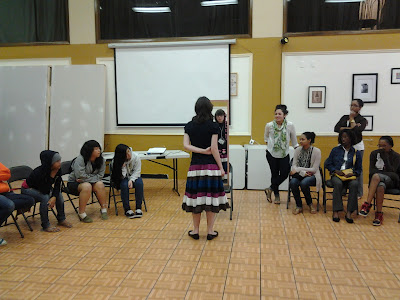 |
| Students in History Active do a mirror activity to think about perception and self definition |
Sinful
Shameful
A reason to be persecuted
Facebook: /LevineMuseum
Instagram: @LevineMuseum
Monday, June 24, 2013
History ACTIVE Day :1 The Many Layers of Our Youth
Dr. King wrote, "Oppresed people cannot remain oppressed forever" in his Letter from a Birmingham Jail.
Today as the first day at History ACTIVE, we students watched "Mighty Times: The Children's March," visited the COURAGE exhibit at Johnson C. Smith and spent the afternoon thinking about where our stories fit in during the past 15 to17 years.
Based on our conversations, we ave created our own quotes about youth activism and civil rights:
"Even though we are young, we have the potential to accomplish great things."
"There will always be resistance to change, but nonviolence is key. "
"There is power in our youth and our community."
"The differences between us are amazing, and yet we are still able to work together."
"We can do anything we set our minds on."
"The youth itself has a lot of power."
There is more to come tomorrow...
Friday, June 21, 2013
Welcome to History Active
 On Monday, June 24, Levine Museum of the New South will introduce its newest youth outreach program. History Active is a conduit for young people to be heard no matter their ethnic, economic, gender, sexual orientation or immigration status. The program aims to tackle changing demographics by recognizing connections between many silenced populations. Diverse cohorts of students will draw parallels between historical Civil Rights struggles and the current push for LGBTQ, immigration, and human rights through learning sessions, media-based responses and an advocacy day. History Active will demonstrate that acknowledgement of the past is essential for meeting the social justice challenges of today.
On Monday, June 24, Levine Museum of the New South will introduce its newest youth outreach program. History Active is a conduit for young people to be heard no matter their ethnic, economic, gender, sexual orientation or immigration status. The program aims to tackle changing demographics by recognizing connections between many silenced populations. Diverse cohorts of students will draw parallels between historical Civil Rights struggles and the current push for LGBTQ, immigration, and human rights through learning sessions, media-based responses and an advocacy day. History Active will demonstrate that acknowledgement of the past is essential for meeting the social justice challenges of today.Over the years, the Levine Museum has encountered thousands of students who feel helpless to influence and engage in the community around them. Some of the biggest obstacles that prevent constructive dialogue and action in young people are the rampant use of stereotyping and the lack of a social action model. The History Active program is a two phase program that assists teens in recognizing various forms of discrimination and introduces teens to new ways of combating inequity. The first phase is a week-long intensive workshop (held June 24-28). Each day during the workshop, students will study a different rights issue and learn how to better advocate for the issues they care about. After the workshop, students will have the opportunity to apply for a seat on a bus tour of three important Civil Rights cities: Charlotte, Atlanta and Birmingham.The bus tour will leave July 15 and return July 18.
A large component of the History Active program is the students' engagement with social networking. Each day they will be tweeting, posting photos to Instagram, updating Facebook, and writing on this blog. To follow what the teens are doing check back here and at:
https://twitter.com/HistoryACTIVE
http://instagram.com/levinemuseum
https://www.facebook.com/LevineMuseum







